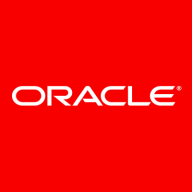

Microsoft Parallel Data Warehouse and Oracle Database Appliance compete in the data management category. Microsoft seems to have the upper hand due to its user-friendly integration with other Microsoft products and competitive pricing.
Features: Microsoft's solution excels in data management with integration capabilities with SQL Server and Power BI, clustered column store indexing for improved performance, and massive parallel processing. Oracle focuses on ease of deployment and high availability with features like capacity-on-demand licensing, compatibility with different Oracle versions, and optimized I/O performance.
Room for Improvement: Microsoft faces challenges with high infrastructure needs, BI tool compatibility issues, and setup complexities. Oracle's areas for improvement include scalability, storage expansion limitations, and patching cycles. Both require advancements in pricing models for SMBs.
Ease of Deployment and Customer Service: Microsoft's flexible deployment options across cloud environments and well-received technical support are notable. Oracle offers straightforward on-premises setup but lacks cloud deployment flexibility. User feedback suggests potential improvements in Oracle's support response and expertise.
Pricing and ROI: Microsoft's solution is seen as cost-effective, especially with Azure integration, though it may become expensive with extensive data needs. Oracle's high pricing offers value through reduced implementation risks and a pay-as-you-grow model.
I would rate my experience with technical support around six on a scale of 1 to 10 because I have not had a particular experience with technical support.
I would rate Oracle support nine or ten out of ten because you can always open a ticket and describe any problems, and the feedback is very quick.
I give the scalability an eight out of ten, indicating it scales well for our needs.
As a consultant, we hire additional programmers when we need to scale up certain major projects.
All enterprise-grade analytics tools allow rapid scaling, making our business more competitive.
Microsoft Parallel Data Warehouse is stable for us because it is built on SQL Server.
Oracle Database Appliance is stable and scalable.
Addressing the cost would be the number one area for improvement.
It would be better to release patches less frequently, maybe once a month or once every two months.
The ETL designing process could be optimized for better efficiency.
There is room for improvement in better integration with third-party tools, such as Power BI or Redshift.
Currently, Oracle Database Appliance is good with no room for improvement.
For the cloud version, there could be better storage options or more storage for lower prices.
Microsoft Parallel Data Warehouse is very expensive.
I am satisfied with the price for Oracle Database Appliance.
Oracle is on the higher end of the pricing spectrum, along with SAP.
The columnstore index enhances data query performance by using less space and achieving faster performance than general indexing.
The biggest advantage of Microsoft Parallel Data Warehouse is the possibility to stop or pause the service because it can be very expensive.
There's a feature that allows users to set alerts on triggers within reports, enabling timely actions on pending applications and effectively reducing waiting time.
The most valuable feature is the ease of dashboarding and ease of reporting.
The automated provisioning feature helps speed up the database deployment process because you can use one command or option to resize all the disks or increase memory, depending on the occasion.
The flexibility of deploying Oracle Database Appliance both on-premises and on cloud may help me address my organization's evolving business needs.
| Product | Market Share (%) |
|---|---|
| Oracle Database Appliance | 4.4% |
| Microsoft Parallel Data Warehouse | 1.7% |
| Other | 93.9% |


| Company Size | Count |
|---|---|
| Small Business | 16 |
| Midsize Enterprise | 6 |
| Large Enterprise | 21 |
| Company Size | Count |
|---|---|
| Small Business | 21 |
| Midsize Enterprise | 9 |
| Large Enterprise | 15 |
The traditional structured relational data warehouse was never designed to handle the volume of exponential data growth, the variety of semi-structured and unstructured data types, or the velocity of real time data processing. Microsoft's SQL Server data warehouse solution integrates your traditional data warehouse with non-relational data and it can handle data of all sizes and types, with real-time performance.
Oracle Database Appliance is the easiest and most affordable way for small or medium-size organizations to run Oracle databases and applications and is an ideal platform for remote and edge computing environments. Customers reduce Oracle Database deployment times and management workloads using a prebuilt integrated system with management automation. As demonstrated in IDC’s business value study (PDF), Oracle Database Appliance lets customers grow revenue and control costs, delivering up to a 498% return on investment (ROI) over five years.
We monitor all Data Warehouse reviews to prevent fraudulent reviews and keep review quality high. We do not post reviews by company employees or direct competitors. We validate each review for authenticity via cross-reference with LinkedIn, and personal follow-up with the reviewer when necessary.